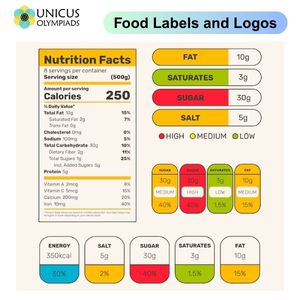

Food labels and logos are essential tools for consumers, offering critical information about the contents of packaged food and beverages. These labels not only highlight the nutritional value but also provide details about the product’s origin, safety, and any certifications it may have. They are designed to help consumers make informed choices, ensuring that the food they consume aligns with their dietary needs, ethical preferences, and health goals.

The nutritional information label provides a detailed breakdown of the nutrients in a product, including calories, fats, sugars, vitamins, and minerals. This label helps consumers evaluate the nutritional value of a food item before purchasing it.
The ingredient list is another important component of food packaging. It lists all the ingredients used to make the product, from the most prevalent ingredient to the least. This is especially useful for people with food allergies or those trying to avoid specific ingredients.
Various health certifications and logos on food packaging can help consumers identify products that meet certain standards, whether it's for organic farming, gluten-free, or fair trade. These logos are often used to indicate that a product is safe, ethical, or beneficial for specific dietary needs.
Every food product must have an expiry date or best before date, which tells the consumer how long the product will stay fresh and safe to consume. This is crucial for food safety and quality.
With increasing awareness of environmental issues, many food products now display symbols related to sustainability and eco-friendly practices. These include symbols for recyclable packaging and sustainably sourced ingredients.
For consumers who follow specific religious dietary laws, food labels often feature symbols indicating whether the product is kosher (permitted by Jewish dietary laws) or halal (permitted by Islamic dietary laws).